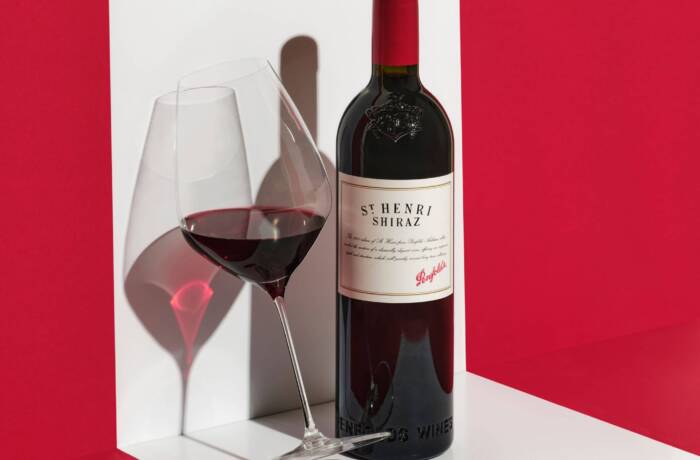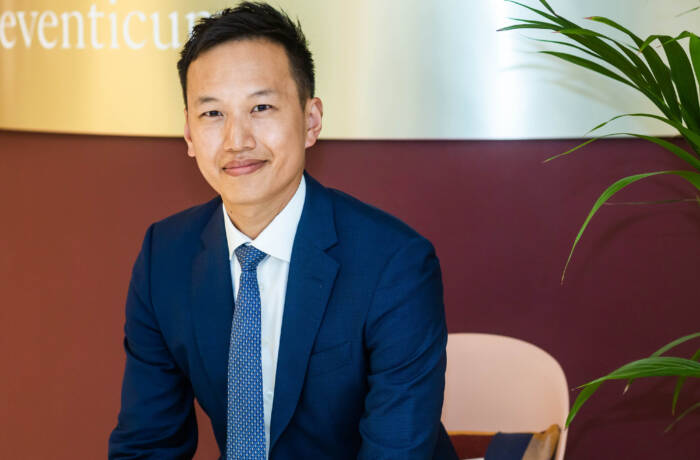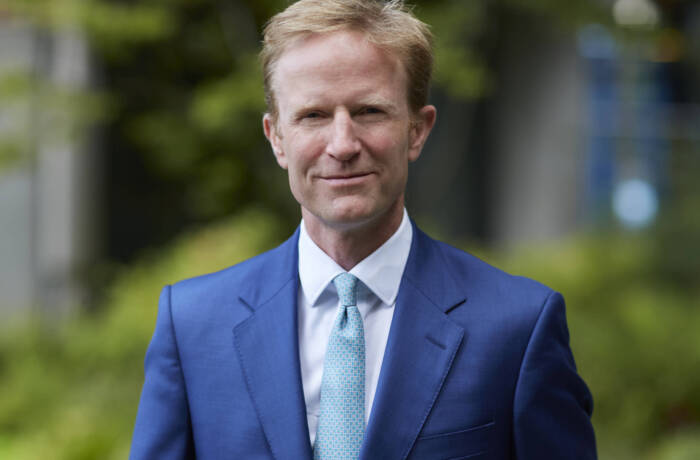
Sassan Behnam-Bakhtiar and Ali Jassim
One is an artist and the other a financier, but in coming together to create a charitable foundation, Sassan Behnam-Bakhtiar and patron, Ali Jassim have also found themselves blurring boundaries and creating art together, discovers Mark C. O’Flaherty
The relationship between artist and patron is one that has formed part of the bedrock of creative endeavours for centuries. The links between the Medici and Michelangelo defined Renaissance Italy with a complexity and intimacy far more than any of Brunelleschi’s domed architectural gestures, or the fictitious romance of Romeo and Juliet. Masterpieces simply flowed from the marriage of painter and family. Similarly, Peggy Guggenheim freed up Jackson Pollock to create his grand abstract-expressionist canvases through a $150-a-month contract between 1943 and 1947, from Mural, the piece he created for her Manhattan townhouse, to his first major drip-technique masterpiece, Full Fathom Five. Right now, artist Sassan Behnam-Bakhtiar and financial advisor, philanthropist and entrepreneur Ali Jassim are exploring what an artist and patron can achieve in the 21st century. Both men have Iranian heritage (Jassim’s on his mother’s side), with Behnam-Bakhtiar based in France and Jassim in Puerto Rico.
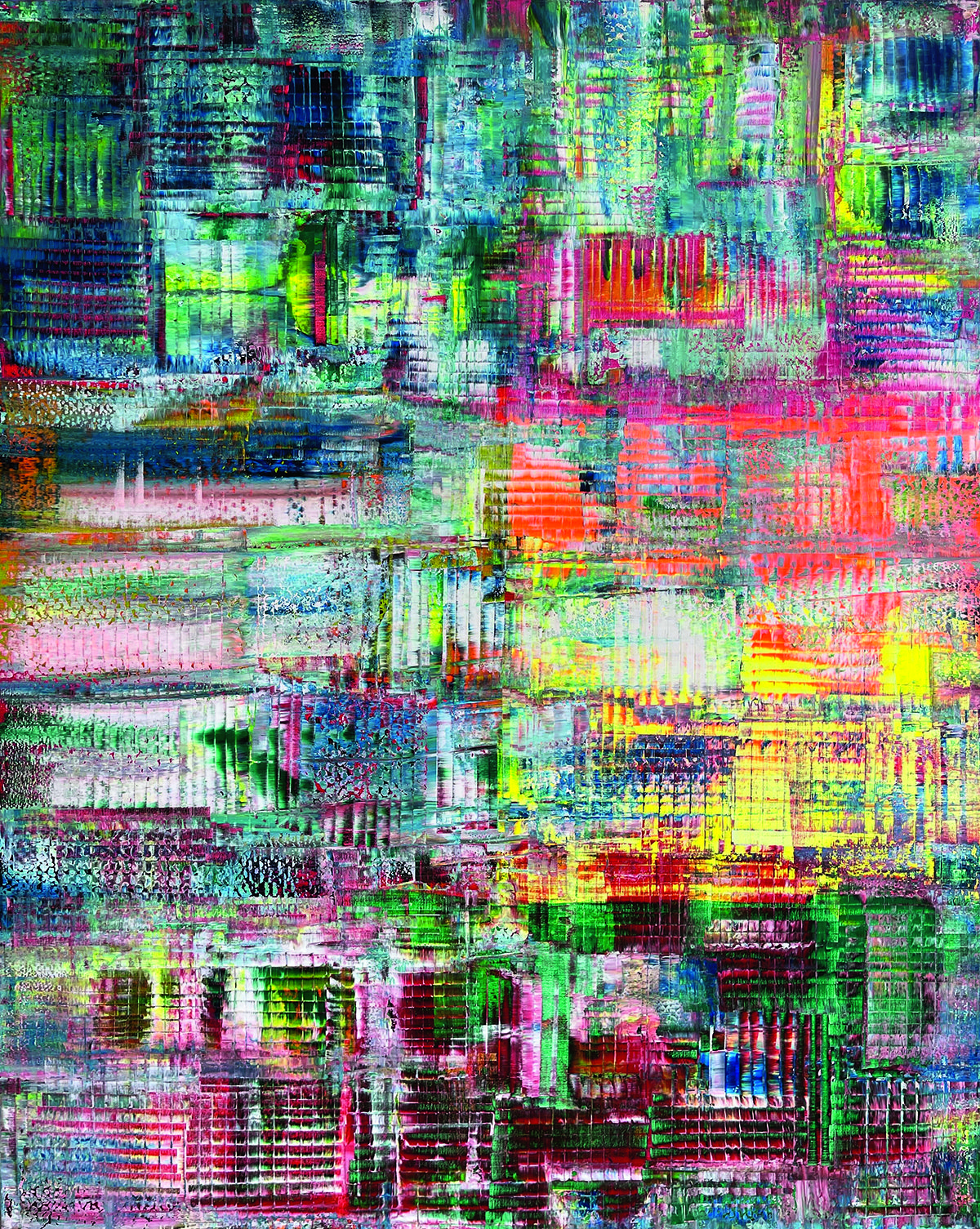
‘Garden of the Soul’ At Dusk, 2020
When I speak to Behnam-Bakhtiar, it is via Zoom and he is in bed, functioning at half speed
after contracting Covid from his wife and child. “It’s okay, it’s just boring,” he says, sitting up to talk enthusiastically about what he was working on before the virus landed, and what comes next. Much of that will involve his relationship with his patron and now partner in philanthropy, Jassim, as they establish the Jassim Bakhtiar Foundation in Monaco, to help children in Iran, Iraq, Afghanistan and the region. “We are doing our first fundraiser next year, in the south of France,” says the artist. “We want to have a huge impact. The language of arts and culture can create momentum and bring on the right people together for a cause, but this isn’t just about donating a few thousand dollars, we are looking at tens of millions.”
Follow LUX on Instagram: luxthemagazine
The pair met around 10 years ago, at an exhibition in London. “We immediately knew we shared many of the same attributes, purely as human beings,” says Behnam-Bakhtiar. “Of course, we both have an Iranian heritage, but we found that we share core values. He was an art collector, and we talked a lot about my theories and philosophy, and he wanted to know where I wanted to go with my work. Then as he spends some time in Cap Ferrat, near where I am, we started talking more about Iran and the orphans of the conflict, and we decided to look at creating a foundation. But our relationship is about more than that. I believe we share experiences from past lives. We talk for about four hours on the phone every day. He likes to come and get his hands dirty in the studio, too, and the dynamic goes both ways: I’ve also become an advisor to him in his business endeavours.”
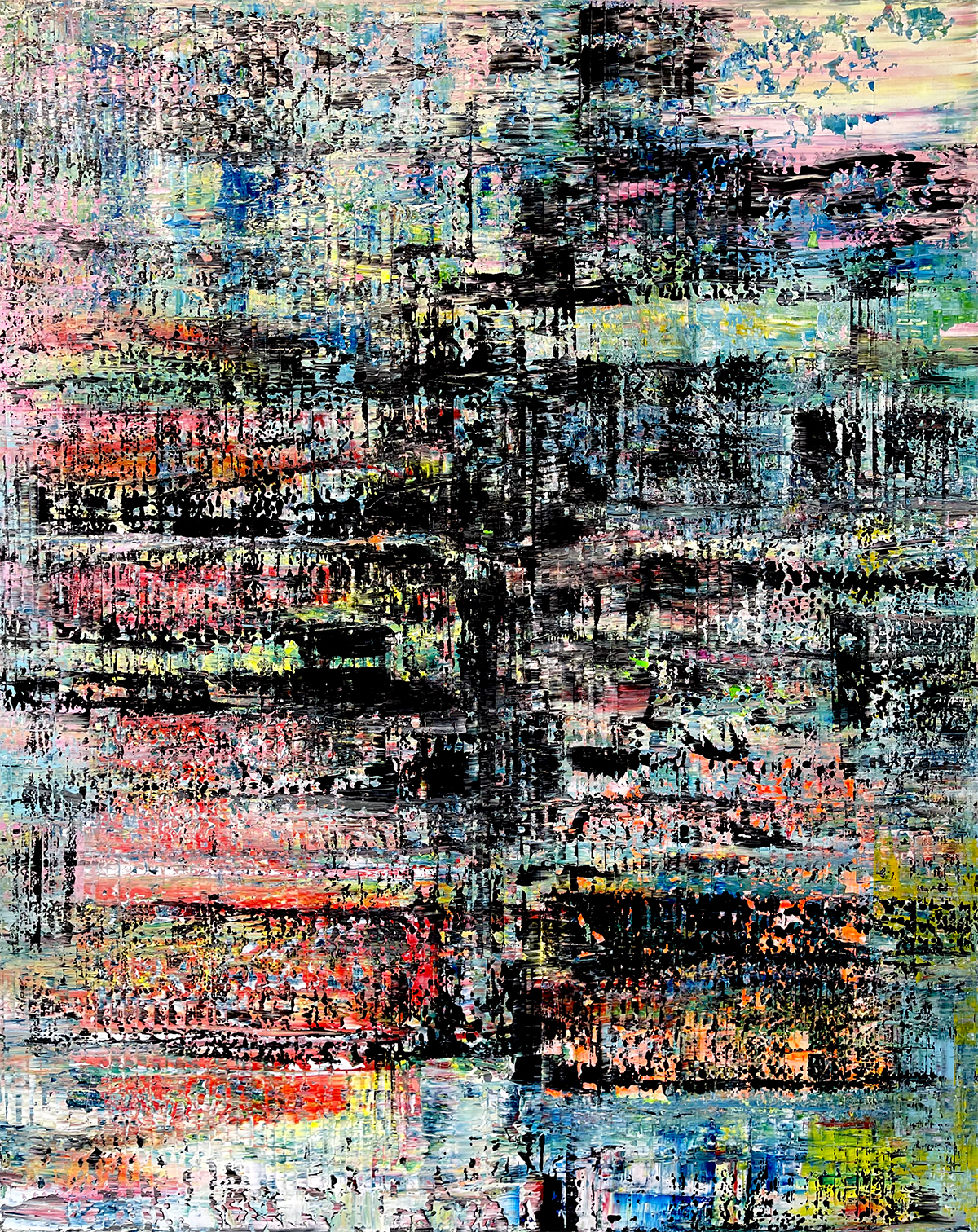
From the ‘Garden of the Soul’ series, At Midnight, by Sassan Behnam-Bakhtiar
Jassim is a fascinating character, who has worked extensively with high-profile figures in the business world of the Middle-East and Europe. “When I first met Sassan, I felt an inexplicable connection. Then, over the years, as I found myself growing emotionally and spiritually, I began to understand it was a connection beyond explanation, beyond science and mathematics. It is a feeling that spans many lifetimes,” he says. “I believe the greatest teacher we have in our life is our own soul. Sassan and I both believe this, and we often take time aside to connect and meditate multiple times a week. I would love to live in a world one day where I feel I’ve had a positive impact and where respect is present across the world throughout races and religions, most importantly for Mother Earth. Difference is what we want to portray on the canvas through the art we are creating, but the goal is unity.”
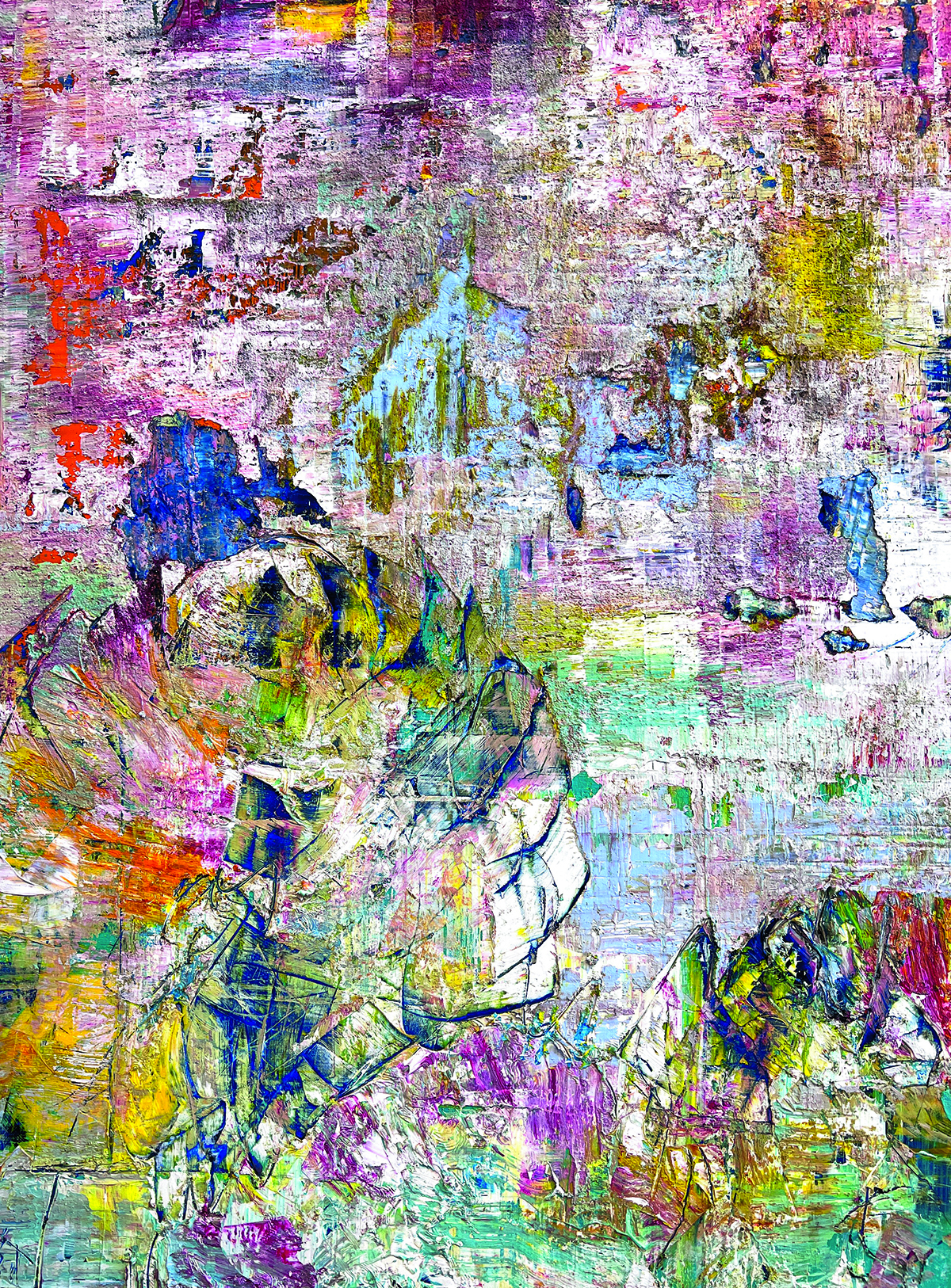
From the ‘Garden of the Soul’ series, Love Always Prevails (detail), 2020, by Sassan Behnam-Bakhtiar
Behnam-Bakhtiar has spent years exploring meditative practices as part of his work, grounding himself with Kundalini principles and, as he says, “focusing on my chakras and accessing dormant power”. He describes a William Blake-style revelatory moment of seeing bright colours after getting deeply into meditation, which fed through to how he creates his work. Many of his canvases have a romantic Monet-like quality to the florals, but also look like pixelated glitches on a monitor. Behnam- Bakhtiar tells me his peinture raclée technique is linked directly to his meditation: “When you strip layers of yourself away, you go inside yourself. I wanted to shut off external layers so I could feed the frequency of my soul. That promoted health and wellbeing and had a profound impact on me. So that’s what I started to do with my painting. I began to scrape off layers. And that physical process takes about six months, even for a relatively small painting. I play with the paint. The consistency of it is crucial. I need to wait after I’ve applied it so that it dries to a certain degree, at which point I can scrape it off to get the texture I am seeking. It is a technique that was born through meditation.”
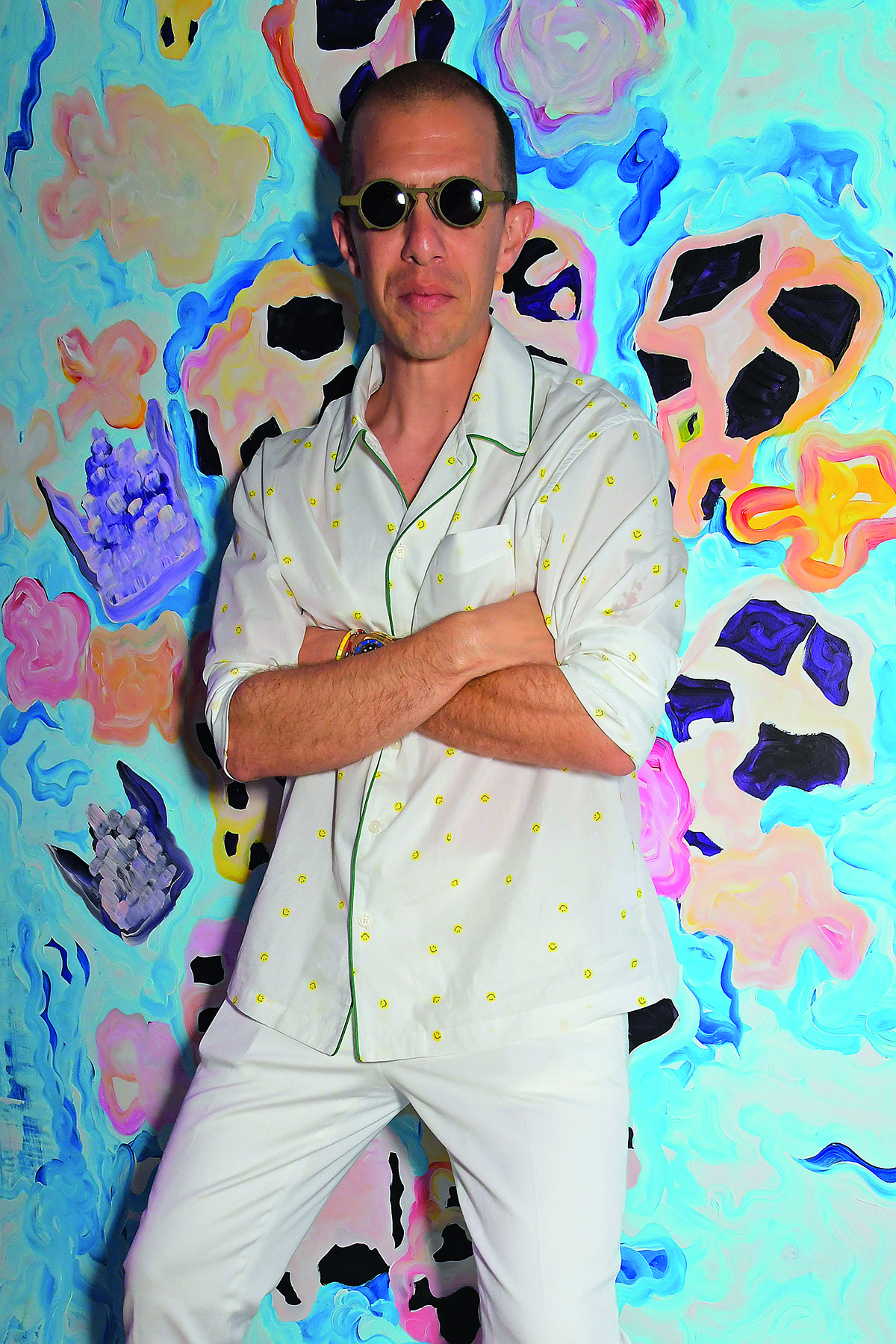
Sassan Behnam-Bakhtiar at the unveiling of ‘The Journey’, 2022, presented by Ali Jassim
As well as exploring meditative practices and laying the groundwork for their foundation (the HQ of which will also house Jassim’s impressive art collection, putting Behnam- Bakhtiar canvases alongside work by Renoir, Damien Hirst, Andy Warhol and Richard Prince), the pair have been working on a collection of paintings entitled ‘The Journey’. Although the imagery has the same abstract beauty for which Behnam-Bakhtiar is renowned, it is also some of the most political and personal he has done in years, with skulls and crowns manifesting themselves in the mixture of oils, acrylics and crushed stone.
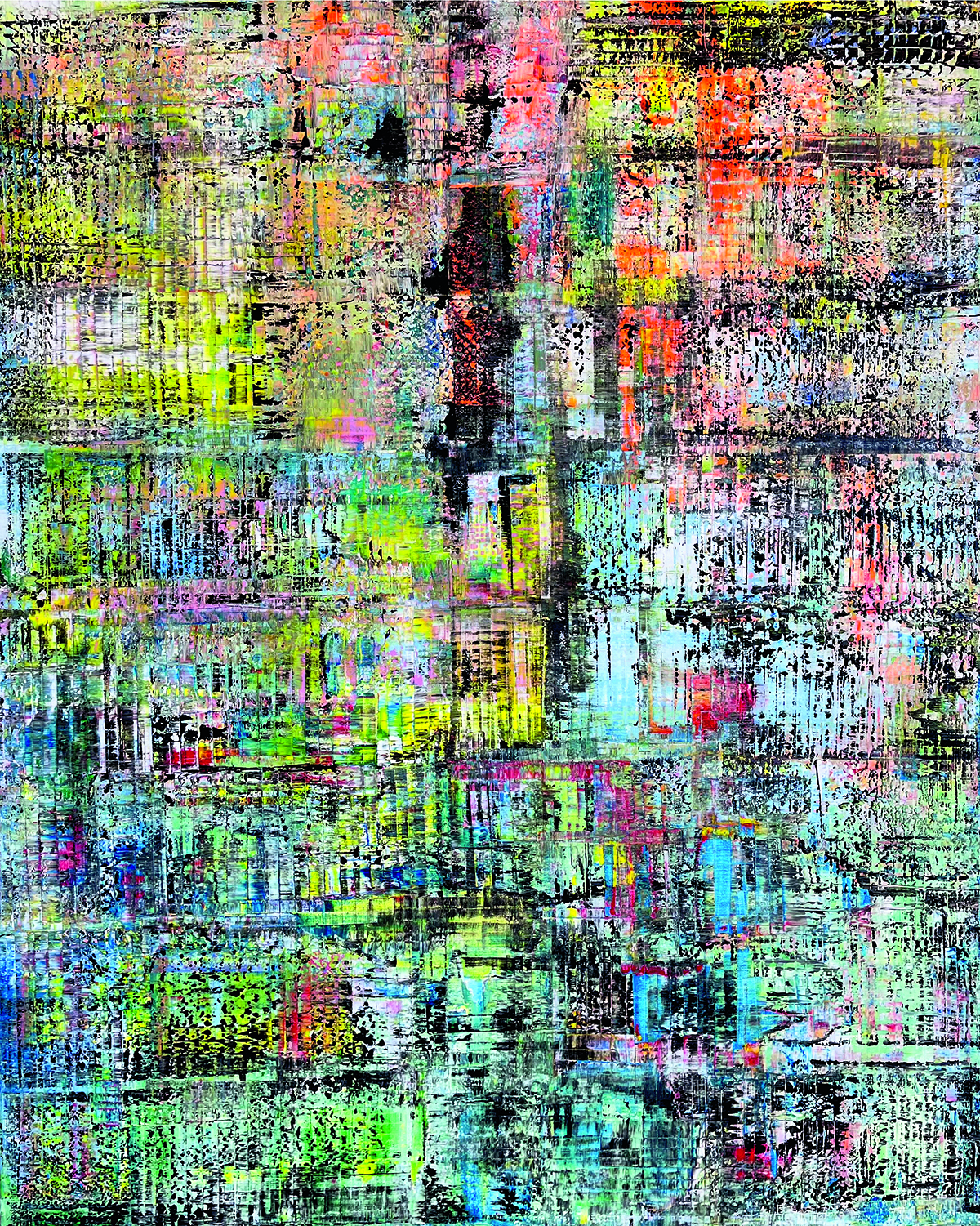
From the ‘Garden of the Soul’ series, At Sunrise, by Sassan Behnam-Bakhtiar
Years ago, Behnam-Bakhtiar worked in the medium of photo collage, and the subject matter was overt. Born in Paris in 1984, he grew up in post-revolution Iran against the backdrop of the Iran-Iraq war. One way of dealing with his traumatic experiences, which included imprisonment and life-threatening episodes, was to address the politics of Iran through imagery in works such as the 2016 series ‘This Way’, which features My Favorite Kinda Soldier is This Way and Tehran is This Way – the latter incorporating a collage of a figure with a gas mask and a dress of Iranian carpet pattern. Subsequently, as he practised meditation, it came to feature in his methodology, and his work became more visually romantic.
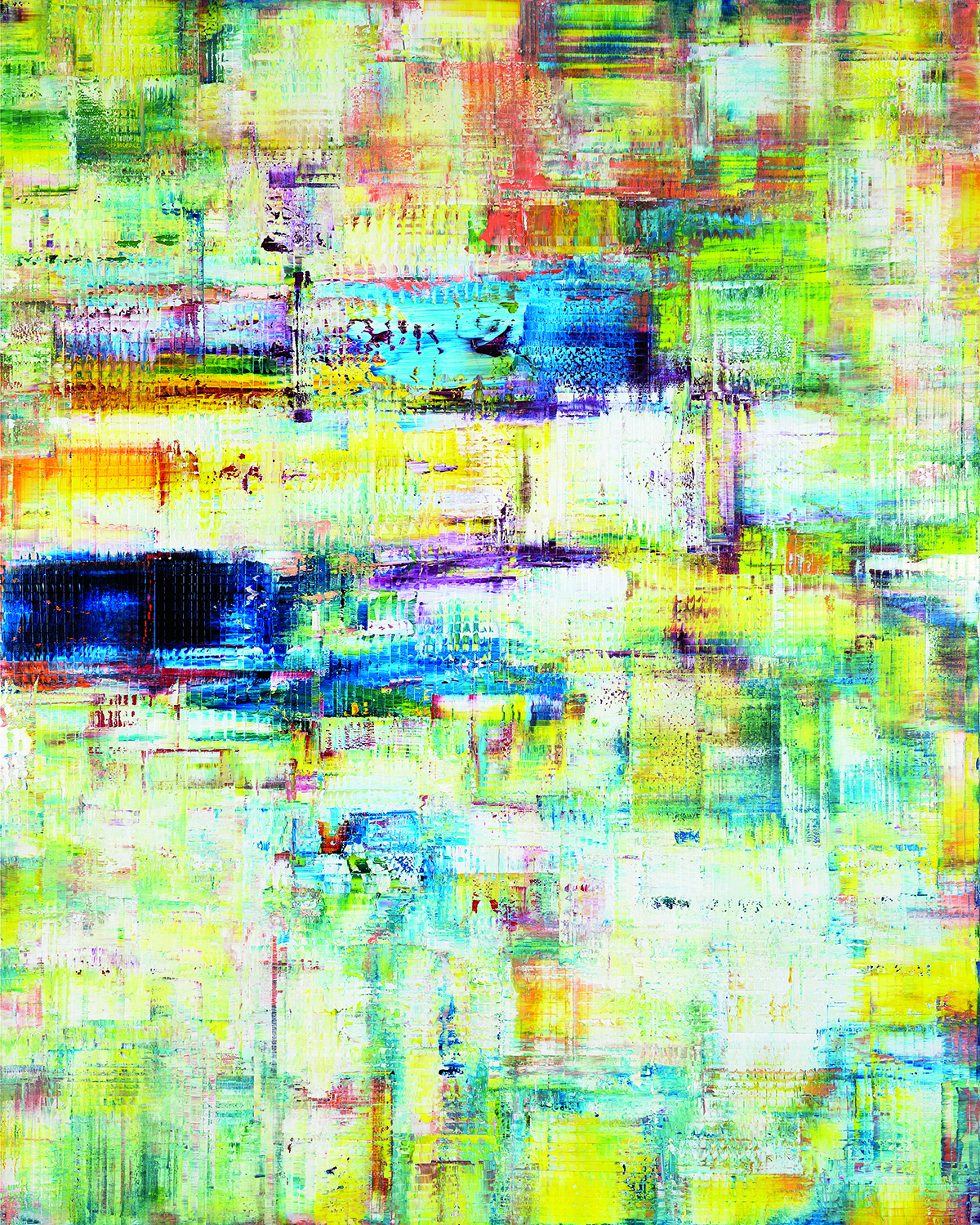
From the ‘Garden of the Soul’ series, At Peace, by Sassan Behnam-Bakhtiar
In everything Behnam-Bakhtiar does, there is the resonance of his trauma in Iran. War and its impact on the human psyche are common and essential themes in contemporary art. In 2022, one of the most talked-about installations at the Venice Biennale was Anselm Kiefer’s work that took over the vast walls of the Sala dello Scrutinio in the Doge’s Palace. The series of paintings, entitled ‘Questi scritti, quando verranno bruciati, daranno finalmente un po’ di luce (‘These writings, when burned, will finally cast a little light’)’ created a devastating immersive tableau incorporating blasted landscapes and remnants of clothing. With war raging in Ukraine, it felt apposite, but almost intolerably graphic and moving. I ask Behnam- Bakhtiar why his reaction to trauma is to create beautiful imagery, rather than aggressive pieces.
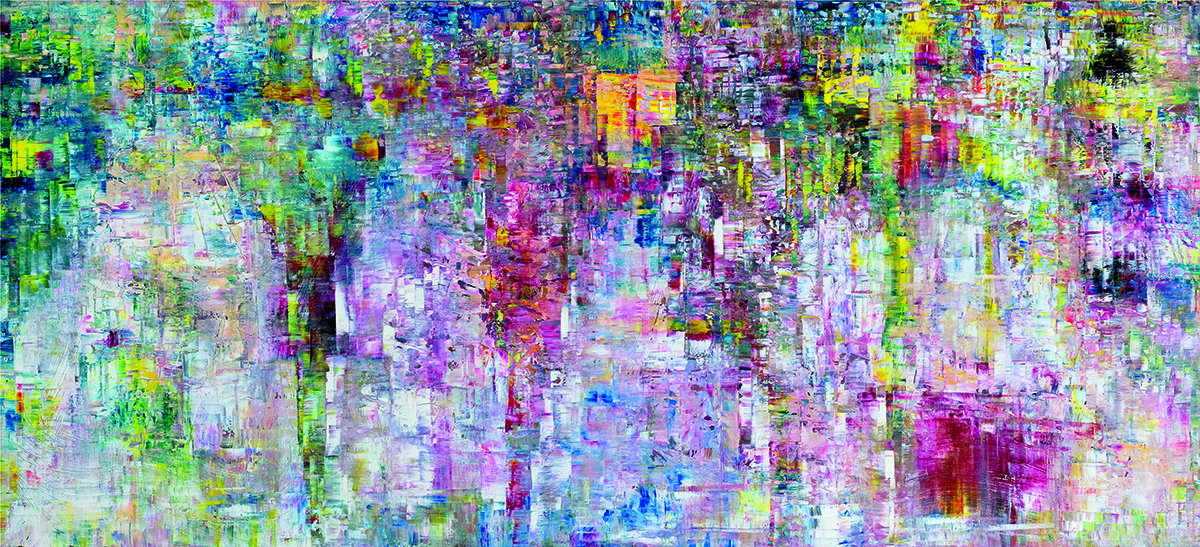
Trees of Paradise, 2019, by Sassan Behnam-Bakhtiar
“That’s probably the best question anyone’s asked me,” he says. “It’s been a very important value in my work. And I’ve had the privilege of being in group shows with Kiefer. My life has been filled with traumatic experiences. Back in the day, I would sit with some of my idols, who were older Iranian artists and friends of mine, and ask why we always had to paint sad things. And I knew the answer, of course – the art world wants us to show women in a hijab and show the sufferings of our people. The collages I used to do, that was when I had lost the plot. I had an exhibition in London and showed that work; it was about the children who were part of the war. Then I created another series, ‘The Real Me’, which was around the time we were all portrayed as bearded terrorists. I wanted to show that, despite the Islamic revolution, we lived like anyone else. I’d had enough of seeing sad work. Even if I start from a dark piece, it always ends up being beautiful. You can see the hurt, but I also want you to see the transformation in it, to bring hope and strength and love.”
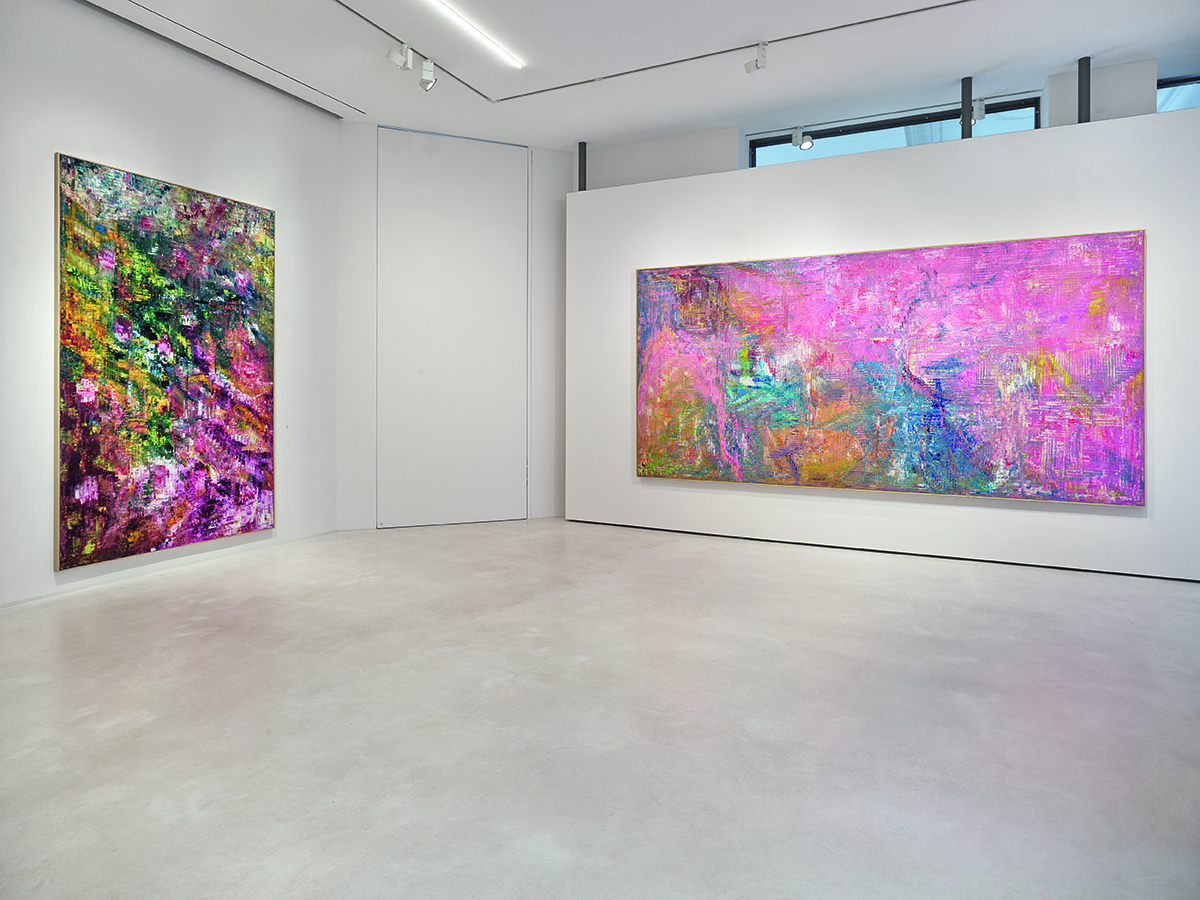
‘Extremis’, Setareh Gallery, 2019
When Behnam-Bakhtiar talks about his patron “getting his hands dirty”, he means literally. Jassim has been working with him in the studio and, while he is operating under the artist’s direction, he has been physically making his mark on the canvas. The physical connection to the work is important for both of them. “What we are doing with the foundation together is so important,” says Behnam-Bakhtiar. “And this is a unique dynamic, for an established artist to work with someone who isn’t a painter. But I want him to have visual input. And I will credit those pieces to both of us.”
Read more: Domaine Clarence Dillon: L’Art de Vivre
With the duo also developing NFTs as part of their output, as well as building the Jassim Bakhtiar Foundation together, the potential for what began as a straightforward patron-and-artist scenario is limitless. The High Renaissance brought us Michelangelo’s Sistine Chapel, created with as many as 13 assistants and the infinite resources of the Vatican. With every advance in technology, and a will to use art for much more than religious decoration, Sassan Behnam-Bakhtiar and Ali Jassim could create unimaginable wonders.
Find out more: sassanbehnambakhtiar.com
This article first appeared in the Autumn/Winter 2022/23 issue of LUX

